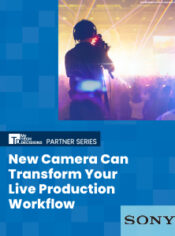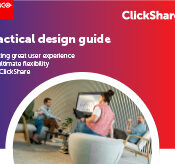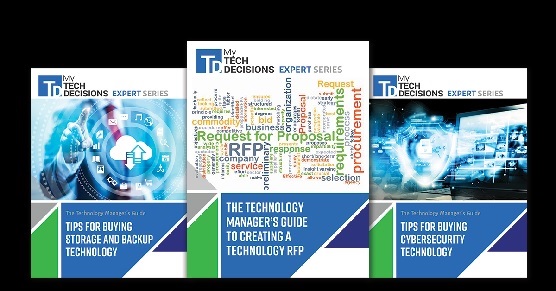Digital signage has a number of what you might call “intangible benefits.” For internal comms, things like employee engagement, which leads to happier, more productive workers who stay in a job longer. For public-facing communications, building brand legitimacy and making a visitor’s experience a pleasant one leads to loyalty and word of mouth recommendations. Digital signage value can truly be measured in many different ways.
But the fact is that a digital signage system costs money – in the initial purchase of hardware and software; the work hours to install, test and deploy; the work hours to maintain the system, as well as creating and scheduling content.
You also might have subscriptions for automated content or a cloud-based system, which have annual costs associated with them. Then there’s training, maintenance, updates and so on. And though costs continue to fall each year, it all adds up.
But are you stuck with only intangibles in return for all this outlay? Not at all.
There are a number of ways to offset your hard and soft costs, and even turn your digital signage into a profit-making component of your business. To answer Mr. Miller’s question below, the way money makes money is through the creation of opportunity.
And your digital signage value presents a number of opportunities.
Digital Signage Advertising
“On the average, five times as many people read the headline as read the body copy. When you have written your headline, you have spent eighty cents out of your dollar.” – British advertising tycoon David Ogilvy
Your digital signage messages are, essentially, headlines. You might have a couple of data points on there, or connect several messages together to present a longer, more detailed campaign, but they are short, to-the-point bits of information.
Digital signs are also highly visual, and pairing a pithy message with a high-quality image can not only communicate a lot, but entice the audience to action.
This makes your digital signage value a natural fit for for-profit businesses, either inside your facility or nearby. It doesn’t matter if you have onsite facilities that you own (like a cafeteria or coffee shop), or you have onsite facilities you rent to outside parties; you can easily drive traffic to those places using digital signage messages.
If you own them, then the increase in sales will directly benefit your organization. If someone else operates them, then you can charge them for advertising on your digital signs.
If you’re a corporate hub and you know employees often have lunch at a nearby restaurant, consider reaching out to that restaurant and creating a strategic partnership. They advertise on your signs, and you charge them a fee for access to your audience.
Related: Want More Engagement? Use Digital Signage Gamification to Your Advantage
The only real caveat here is that what goes up on your screens should be relevant and valuable to your audience. Don’t just turn your digital signage into an advertising free-for-all.
That’s a sure-fire way to make them lose digital signage value to your core audience. For example, you might think you wouldn’t partner with a local car wash at a K-12 school since children don’t drive.
But maybe you would, only displaying those messages when you know parents will be at the school, or only on staff-facing digital signs. And, of course, 16-18-year-old students are most likely driving.
You also want any messages that go on your screens to fit in with your brand and identity. You could either offer to create ads for businesses, or create branded templates that fit in well with your overall look. These ads could be somehow tailored to your specific audience as well, making them feel more relevant.
Pricing & Digital Signage ROI
Certain digital signs will have more traffic moving past them than others, or at certain times of the day, a particular sign might see a larger audience.
You could have a sliding price scale, with higher-visibility signs or ads displayed during high-traffic times costing a bit more. Creating loyalty programs with local vendors can also be another way to guarantee revenue.
“Money makes money, but what makes money make money?” – Henry Miller
Static, single-message ads could be at one price point, while video ads could be at a higher one. A series of connected ads, like a campaign, could be at still another price.
But, again, it needs to be enticing to your audience. Suggest to advertisers that they offer something – a discount using a special code, a frequent customer program – that is unique to ads placed on your digital signs.
People will be more likely to attend the local Oktoberfest, and be less like to find the ad intrusive when it comes around in the playlist, if they know that they get a special 20% discount off admission fees, or a free drink by taking a smartphone snap of the ad, or something similar.
Local events, community businesses, special sales, bookstores that offer discounts on books and publications specific to your industry, swag, local food and refreshment providers – just about anyone might find it worthwhile to pay a bit to advertise on your digital signs.
Good digital signage value involves a system that is a bit like a community board in a small-town square – everyone walks past and looks at it, and it’s also anonymous. You keep control of your audience’s information, so there’s no chance for a business to spam them.
And by offering unique discounts, products or services that are tailored to your audience, both you and the advertiser have built-in ROI.
One way to approach potential advertisers is to show them some figures, and base your pricing on those. Things like:
- Audience volume (including visitors)
- Number of displays
- Frequency of advertising
Example:
1. Total audience population: 600
2. Total number of integrated displays: 20
3. Ad runs per day: 3
4. Average number of days of operation per month = 20 (M-F)
5. 600 x 20 x 3 x 20 = = 720,000 potential exposures per month
Menu Boards
Interactive screens and kiosks offer even more possibilities. Take menu boards as an example. Food and drink items are displayed, along with nutritional and allergy information, and a high-quality, enticing image.
People can scroll through at their leisure, looking at food on offer today or later in the week (“Oh, Taco Tuesday is tomorrow!”).
Menu boards can also be integrated with POS systems, so people can not only see the menu and additional details, but actually order right there on the screen. This reduces queues, streamlining the
entire process, which leads to cost-saving efficiencies. In fact, restaurants that get an interactive menu system like this report they make back the initial costs within the first 18 months. That’s perfect for a facility that has onsite services.
This can also work for off-site establishments. Include an online reservation form (or connect with a reservation system the restaurant already uses), add in some wayfinding directions, and suddenly your menu board becomes a truly valuable resource for your audience.
A menu board is really just software showing a list of offerings. It doesn’t have to be about food; it could be for anything. A spa, a movie theater, a local shop, a public swimming pool, a nearby bank – honestly anything. Anything your audience might find interesting and useful.
You’ve already spent the money on digital signs, so why not make some of that money back by making them available to others?
Done right, this sort of program can benefit everyone: your organization (regular income), the establishments who advertise (increased business) and your audience (special deals and local information that’s interesting to them). It’s a win-win-win for digital signage value.
If you enjoyed this article and want to receive more valuable industry content like this, click here to sign up for our digital newsletters!











Leave a Reply